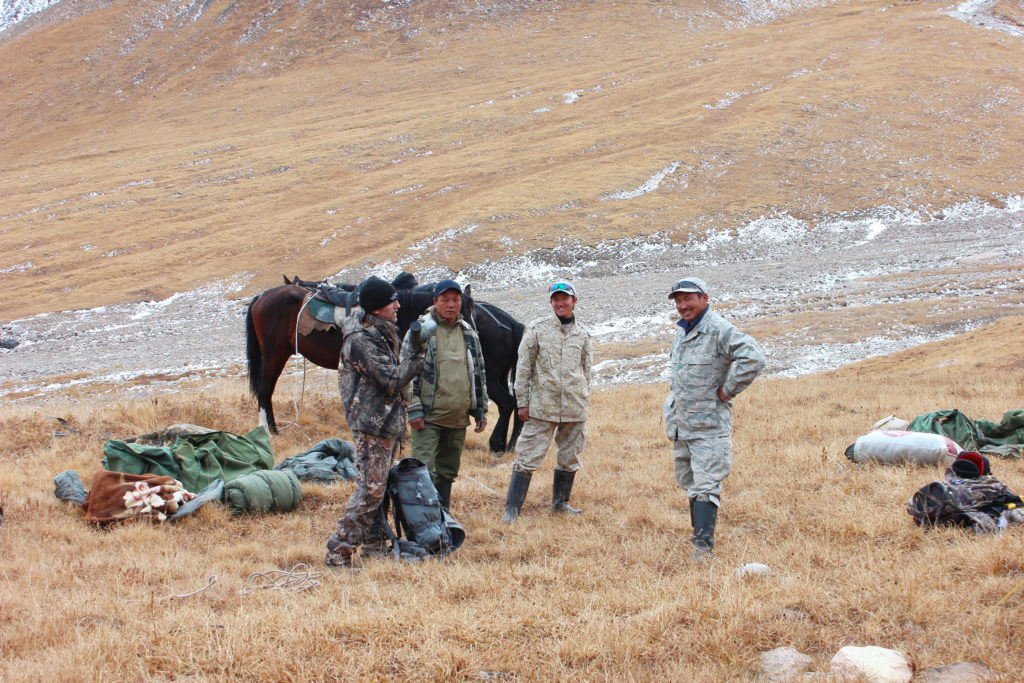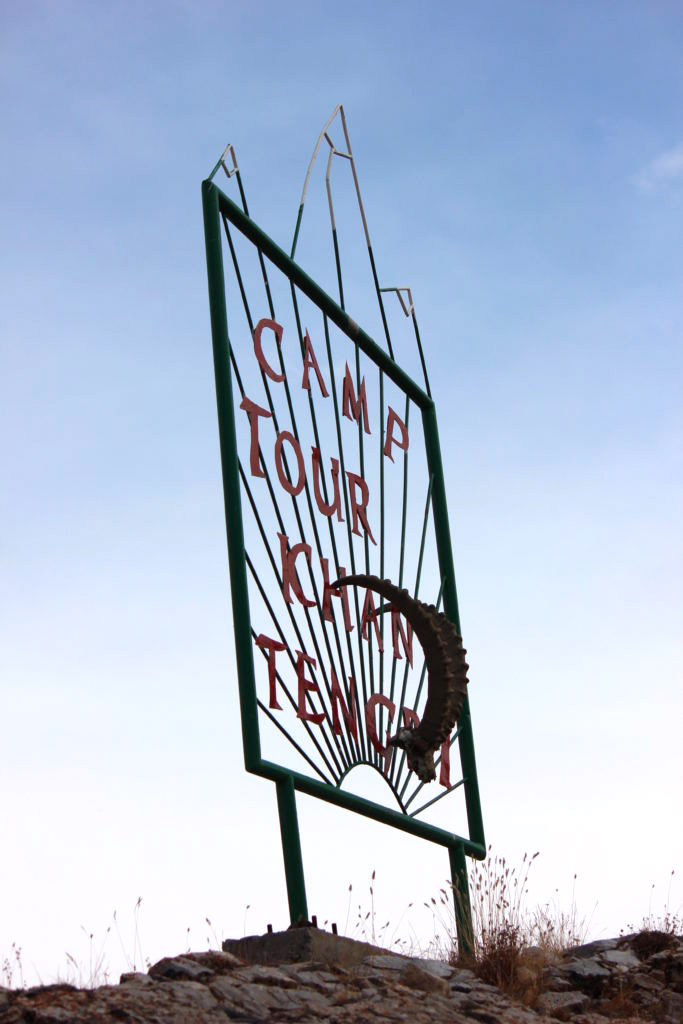There are few things in life more satisfying than setting a lofty goal and then achieving it through hard work and sacrifice. Honestly, I’m not sure what motivates a man in his Medicare years to attempt a notoriously difficult hunt in some of the highest and most rugged mountains on Earth. The progression from young and invincible to aged and vulnerable is slow and often laced with mental anguish – particularly when contemplating physical limitations imposed by Father Time. Taking a mature bull elk at 9,200 feet with a well-placed arrow while hunting solo the previous year in Arizona may have extended the window, but there were times when it seemed to be closing quickly. That hunt clearly infused some confidence. Nevertheless, uncertainty loomed… did this old graybeard, now sporting multiple shades, have one more mountain hunt left in him?
A few years back, while chatting with professional hunter/consultant Tim Herald about his upcoming ibex hunt in Spain, I mentioned my own desire to hunt one or two of the larger ibex species before age prevented me from doing so. Let’s fast forward to late fall 2016.
I received a note from Tim – who was now a partner in Worldwide Trophy Adventures – inviting me to hunt mid-Asian ibex in Kazakhstan, filling in for a medical cancellation. Kazakhstan offered the opportunity to hunt the largest of the ibex species at the comparatively low elevation of 7,000 to 9,000 feet, and Tim would be hosting the hunt with Shikar Safaris. Smart man, Tim Herald…I suspect he knew that for me to spend my hard-earned writing fees on a remote hunt like this halfway around the world, it would have to be with an experienced outfit.
Flights were soon arranged for the six hunters in our group, converging in Almaty from across the U.S. A month later, and with no specified reason or advance-warning, the government of Kazakhstan banned hunting in their national parks. Argh! A good friend and fellow outdoors writer had warned that plans in this part of the world were “fluid” at best. He was right on the mark, as this was just the first of many significant changes to come. He also cautioned that “Asian hunts are not for everyone,” as some personality types don’t fare well in dealing with the unexpected. Fortunately, Tim had assembled an excellent group, and when Shikar Safaris offered to move our hunt to Kyrgyzstan on the same dates, all were quick to agree. This location had a permanent base camp, and promised better ibex hunting in terms of both quantity and quality. With an excellent chance of taking a 50-inch specimen here, the prospect was intoxicating. Besides the logistical changes, the only negatives were hunting at higher elevation and potentially longer range shooting. We were advised to prepare to shoot out to 500 yards, at elevations from 9,000 to 11,000 feet.
My preparation included conditioning, and readying a rifle for the task. Living at 7,000 feet in Arizona’s White Mountains, and traveling most days across a 9,000 foot plateau with 11,000 foot peaks to get to my shop, training at elevation was not a problem for me like it was for others in our group. In my 40’s and even 50’s, I was usually fit to hunt after a week or so of vigorous exercise and climbing. Now in my late 60’s, I have learned that crash conditioning just makes me tired and sore rather than fit! Thus, I vowed to start early, taking long hikes in the mountains with my pack of Labrador retrievers. Painful flare-ups from an old foot injury and the unexpected onset of gout caused training interruptions. Nevertheless, with determination and persistence – and pharmaceuticals – I pushed on with a mind-over-matter mantra.
You might think that rifle preparation, though time-consuming would be less stressful. No! I decided to replace the scope on my 300 Weatherby Mag with a higher magnification, long-range model. Unfortunately, the scope I wanted was backordered for several months. It arrived just a few weeks prior to the hunt, and I immediately rush-ordered a custom turret for high-elevation shooting with my favorite loading. After two trips to the range – including one with my gunsmith – and burning a couple hundred dollars in ammo, we determined the new scope was defective! Fortunately, an entirely new scope came to the rescue in the nick of time, with a Nikon Monarch 5 riflescope in 5-25x50mm. And, with handloads meticulously crafted by my good friend, gun writer Sam Fadala, I was quickly shooting 3-1/2 inch groups at 500 yards. Phew!
Fluid Plans
Conditioned, packed and as ready as I could be, October finally arrived and so did our departure day for Kyrgyzstan. It was a long day (or three) of travel – 3-1/2 hours by car from home to Phoenix, and then 30 hours of air travel from Phoenix to Atlanta to Amsterdam to Istanbul to Bishkek, capital of the Kyrgyz Republic. An hour after arrival in Istanbul, where we had several hours between flights, I met up with Tim, Tom Niederer from Michigan and Steve Thurman from Georgia. Unfortunately, we met at the Delta/KLM/Air France lost baggage counter. Missing were our four gun cases, as well as Steve’s duffle bag. After more than two hours of waiting for information that never materialized, badgering the hapless counter attendant, making dozens of phone calls, and receiving a ration of mostly useless advice from wannabe authoritative locals familiar with the problem, we had exhausted all avenues of inquiry.
Our only remaining option was to file claims with the lost baggage agency at the airport, before boarding our flight to Bishkek on Turkish Air. This truly revolting development is one that has become all too common for hunters traveling internationally with guns, despite having all the proper permits and declarations in order. Certain airports have gained a well-deserved reputation for damaging and mishandling gun cases – intentional in my opinion. And, international carriers like Delta (and in this case, their operating partners KLM and Air France) have done little to correct this problem. Furthermore, there is simply no excuse for the surprising and careless lack of information within the airline’s baggage tracking systems.
Arriving in Bishkek in the wee hours of the morning on day three, we were met by Mohammed and his uncle, Kyrgyz locals who would help with our baggage and chauffeur the group to base camp. We were soon joined by representatives from Shikar Safaris – top flight mountain hunter, guide and interpreter Halit Kilic from Turkey, and professional hunter and logistics expert Jose Castresana from Spain. Jim Sheehan from Connecticut had also arrived, and he and his rifle were undergoing security processing – an ordeal that dragged on for well over an hour and included some sort of “unofficial” negotiation! Mohammed returned in a rush, accompanied by an airport security agent who demanded that we remove all ammunition from our baggage and turn it over to him for “inspection.” That was the last we saw of our ammo.
Since we had no rifles, we needed no ammunition they reasoned, refusing repeatedly during lengthy negotiations to return it to us, despite our valid government-issued permits and other documentation. We later learned that “security” had offered to return our ammo cases in exchange for the sum of $200 USD. When Mohammed countered with an offer of only $50 they apparently became offended, and a Kyrgyz soldier suddenly materialized. He was outfitted for combat with flak jacket, ammo belt, black knit hood/facemask with tiny holes for mouth and eyes, and an AK-47 at the front-and-ready position. The intimidating display was effective, and we left the airport as soon as Jim and his rifle were released. But, instead of heading for hunting camp as planned, we checked into a local hotel… with fluidity! Since the whereabouts of four rifles and one duffle bag, as well as the sixth hunter in our group were unknown, Jose made the executive (and wise) decision to spend an additional day close to the airport. It was starting to look like the hunting might be anticlimactic in this adventure…welcome to Kyrgyzstan!
The following 24+ hours were spent hanging around the hotel in Bishkek, while trying to locate our gun cases and Steve’s duffle. Most of the information we obtained was sketchy and conflicting. Mohammed returned to the airport with Halit, hoping to find our guns and/or recover our ammo, without success. It was a miserable, wasted day. Late that night, missing hunter Michael Fox arrived at the hotel. He had intentionally skipped his flight out of JFK in New York, to wait for his gun case that was delayed when he departed from Washington. With flight change fees, hotel and cab fare, that bold move cost him more than $1000, but at least he had his rifle… and ammo! Next morning, we learned that Shikar Safaris had sent a representative to the airport in Istanbul to assist, and that our gun cases would not be delivered to us in Bishkek. Instead, they would remain in the custody of Delta Airlines for return to their points of origin. Apparently, Turkish Air had recently implemented a policy whereby firearms would not be transported unless accompanied by the owner on the same flight. So, when Delta (technically KLM and Air France) finally got around to transporting our gun cases to Istanbul, Turkish Air refused to accept them because flight records indicated that we had already left the country.
With only two rifles for six hunters, we needed more guns! A deal was made to rent a rifle – a Blaser R8 in 300 Win Mag – so we checked out of the hotel, loaded the two SUVs and drove across town to a gun shop. Unfortunately, there was some sort of permitting problem with obtaining more than five rounds of ammo for the rifle. After another “unofficial” negotiation, and a cross-town trip to locate an ATM machine for more cash, a box of 20 rounds was purchased in the parking lot for the princely sum of $131 USD. It was now late afternoon, and we were finally ready to head toward the mountains… finally!




